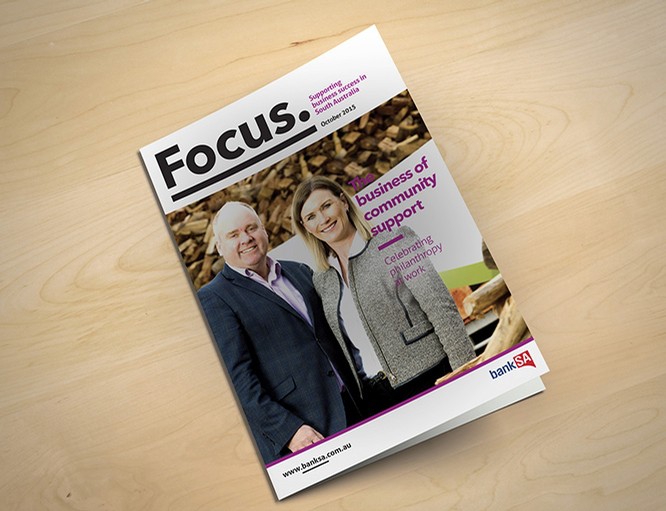


The Situation
In 2014, the Project Control Group (PCG) for the then yet to be named The Brougham appointed Hughes to manage the PR and communications for a planned mixed used development on Brougham Place, North Adelaide. The $200 million development was earmarked for retirement living, traditional apartments, serviced apartments and commercial/retail tenancies, with more than 90 high-rise retirement residences across three buildings with heights scaled from 9 to 16 storeys The PCG had concerns about the community’s potential response to such a large scale, high-rise development in North Adelaide and the potential for a groundswell of opposition from influential and possibly highly vocal local residents.
They were mindful of the potential for any public opposition to overshadow the project and its impact on achieving the momentum required to create interest from potential buyers, particularly as this type of premium retirement living is largely untested in South Australia. Essentially, they would need to create a new market.
The Group also acknowledged that while experienced in business, finance and property ownership that they lacked experience in residential development and required expert assistance including marketing, PR and communications.
Objectives
- Providing a community and political environment which supports approval
- Identifying and mitigating any potential risks associated with the project including any community and government opposition
- Educating and informing the market about ‘prestige retirement living’
- Developing, establishing and positioning The Brougham in the marketplace
- Creating a ‘new market’ in South Australia for ‘prestige retirement living’
- Building registrations of interest and project enquiries
- Ensuring ongoing engagement with registrants; and ultimately driving sales
Elements
Hughes developed and implemented an integrated communications strategy designed to seamlessly support the project through the development approvals process and into a brand launch. This strategy was developed to ensure the project achieved and then continued to gain the necessary momentum required. To date, this has involved two distinct phases.
Stage One – Development application and approval process
During this stage, our approach was based upon ensuring the project remained a ‘small target’ within the community and media to ensure a smooth path through the development approvals process. Simultaneously, we worked to develop the project’s brand and brand identity and marketing collateral to ensure we were able to roll out a brand launch at the earliest opportunity.
Work undertaken by Hughes included:
- Working with the PCG and key appointed project consultants (planning, architects and heritage architects) to develop a risk mitigation strategy which included preparing Q&As, media statements and briefing and gaining the support of key influencers to create project advocates;
- Creating an initially unbranded registration of interest website to be launched to time with a Category 2 consultation;
- Developing an initially unbranded project information video for the website, key influencers and media;
- Proactively managing the initial media for the Category 2 consultation to ensure the publicly released plans were both received and covered positively;
- Commissioning and managing project photography including a drone shoot of the 360 degree views from every level;
- Commissioning and managing the production of key project renders;
- Developing artwork for the e-news (EDM) and a database communications program;
- Booking Google adverts to ensure the website could be easily found from an online search;
- Collating and analysing registrations of interest in conjunction with the selling agent;
- Preparing website and Google advert analytics to ensure we could assess site traffic against our marketing activities. In turn, this helped us to make informed decisions regarding our strategy and alter, where required.
- Advising on the project naming and brand positioning;
- Developing the concepts for the brand identity and preparing a style guide for the chosen identity.
Stage Two – Brand Launch
During this stage, we worked on further developing the overarching marketing and communications strategy and applying the project brand to the required marketing collateral. The strategy and associated marketing materials were developed to ensure that we were able to maintain momentum by going to the market straight after receiving development approvals.
Work undertaken by Hughes included:
- Evolving the project website to a branded marketing website with updated video, copy and imagery;
- Developing the project brochure including all artwork and copy;
- Developing artwork and graphics for the project floorplans and floorplates;
- Preparing artwork for external onsite signage;
- Commissioning production of external signage, securing council approvals and managing installation;
- Designing display panels and information flow for a preliminary display/information centre;
- Preparing artwork for the project’s business stationary – letterhead, business cards and envelopes;
- Further editing of the project video and application of the branding;
- Managing all print production including sourcing suitable paper stocks, quotes and press checks for quality control;
- Preparing and distributing ongoing database communications to maximise engagement;
- Managing the announcement of receipt of development approvals with media, key influencers and the project database;
- Continuing to negate the potential for community objection and negative media coverage.












